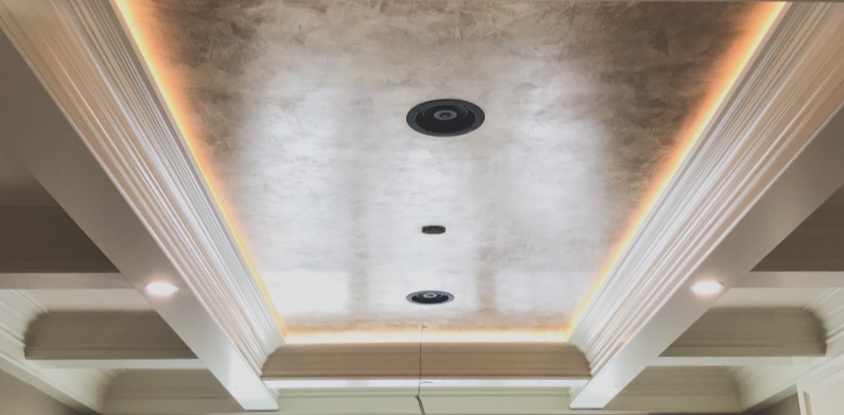No matter the technique used, glazing or washing, stippling or strie—the possibilities via various decorative finish methods are truly endless. The sky’s the limit. Create patterns, old world textures, or designs of your very own style. Mimic a natural texture, such as wood grain or stone, invent a Trompe l’oeil, or gold leaf the ceiling.
To get started, Surface Design always recommends to its clients to find pictures of rooms that you like on Pinterest, and then showing those images in the consultation.
Having those visuals is a really good starting point to help our clients envision what they like. Use them in any room that you wish to create a dramatic, artistic, or truly personalized effect, or play around with accent walls.



